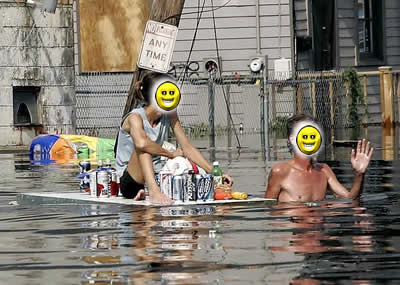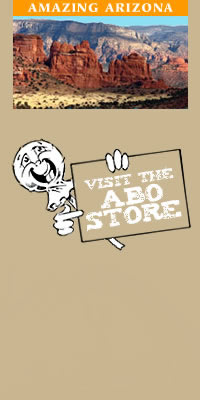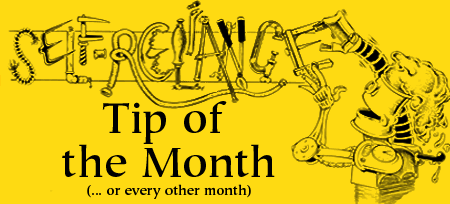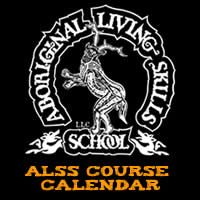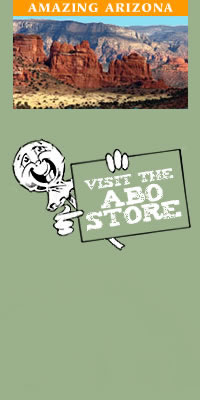© by Cody Lundin
(February) Building a fire is a literal statement, and involves two out of the three core concepts of fire making; fuel and oxygen. Put the sticks too close together and you die, (lack of oxygen). Put the sticks too far apart and you die, (lack of the interplay of long wave radiation from one burning stick to the other). Most people fixate on the ignition aspect of fire making. The wise survivor will spend twice as much time learning about the physics of fuel and oxygen placement - building a fire - than on learning ignition. The more skilled one is at "building their fire", the less heat or ignition will be required to light the fire.
(September) Match safes are invaluable to the survivor. Always use a match safe to store matches for field use for many reasons. A quality match safe should float, keep your matches from getting wet, help prevent the match heads from oxidizing, prevent matches from breaking while keeping them all in one place, prevent them from accidentally lighting, and be highly visible.
(July) First-aid skills are mandatory for the survivor. While this might seem obvious, what remains undone - even for most "survival instructors" - is learning about human physiology. The goal of most all survival skills is to keep the human body alive. Yet the lions share of people interested in survival skills don't know anything about human physiology; let alone the ramifications of psychology upon the body and how fear and panic change and dictate our physiology. Learning basic first-aid skills gives you a clue into how the body works; and what kills it first. Knowing what the body needs to survive from a medical perspective will give you insight into what you truly need to prepare and pack in your survival kit and more; without being held hostage to other peoples opinion, bias, ego, fear or ignorance.
(April) Alternative transportation is one of the most over-looked needs in a rural or urban emergency scenario. In our modern society, getting from point A to point B is completely taken for granted. During times of fuel shortages or compromised access for whatever reason, having an alternative means of getting around is wise. A good pair of "walking" shoes or boots - broken in but not broken down - will come in handy when walking is your only or best option. All terrain bicycles - in good repair with a tire patching kit - get you from here to there with a minimal expenditure of personal energy. Motorcycles and mopeds are still a slave to petroleum, yet offer their owner extended miles per gallon.
(February) Passive solar refers to the right orientation (solar south) of a structure to take advantage of short wave radiation from the sun. In a conventional home, windows let in short wave radiation that strikes a thermal mass object such as a concrete floor where the energy is stored . The absorbed radiation changes to long wave radiation, which has a hard time traveling back out through the glass, thus the heat is somewhat trapped within the home, (free heating!) I have visited Indian ruins where a south facing cave entrance was improved upon by the creation of a thick mud plaster floor. The floor not only kept the home cleaner, but absorbed the winter sun into its mass, similar to the concrete flooring mentioned above.
(January) Eating snow to help prevent dehydration is a flawed concept in a "common" winter survival scenario, even though dehydration is just as important to combat in winter cold as it is in summer heat. Newly fallen snow contains only about 10% moisture and 90% air. Once a person is dehydrated, they are technically one to one and half quarts low on body water. The sheer volume of snow that would need to be consumed to achieve hydration would dramatically decrease the body's core temperature through the colder conductive properties of the snow itself within the body. Small amounts of snow eaten periodically when the body is not already hypothermic may be acceptable. Melt snow or ice if at all possible before ingestion if using this source of moisture to prevent dehydration.
(December) Proper clothing for the environment encountered, although boring to many, is your number one defense for many reasons against the biggest killers of all outdoor enthusiasts, hypothermia (low body core temperature) and hyperthermia (high body core temperature). What the clothing material is made from, how it is worn, and where it is worn on the body all influence the clothing's effectiveness in repelling extreme cold or heat to maintain thermoregulation.
(November) Butane lighters don’t like “cold” weather, and will not work when the mercury dips (even though full of fuel) unless they are heated in the hand or by some other heat source before using. Carrying the lighter near the body will eliminate much of the problem.
Bonus tip of a lifetime!
Steer clear of this survival kit.
Toilet Paper, check…
Bud Light, check…
Keystone Ice, check…
Budweiser, check…
Red Dog, check…
Miscellaneous bottles of alcohol......................check.
Piece of old foam board to float your wife and booze on, check.
